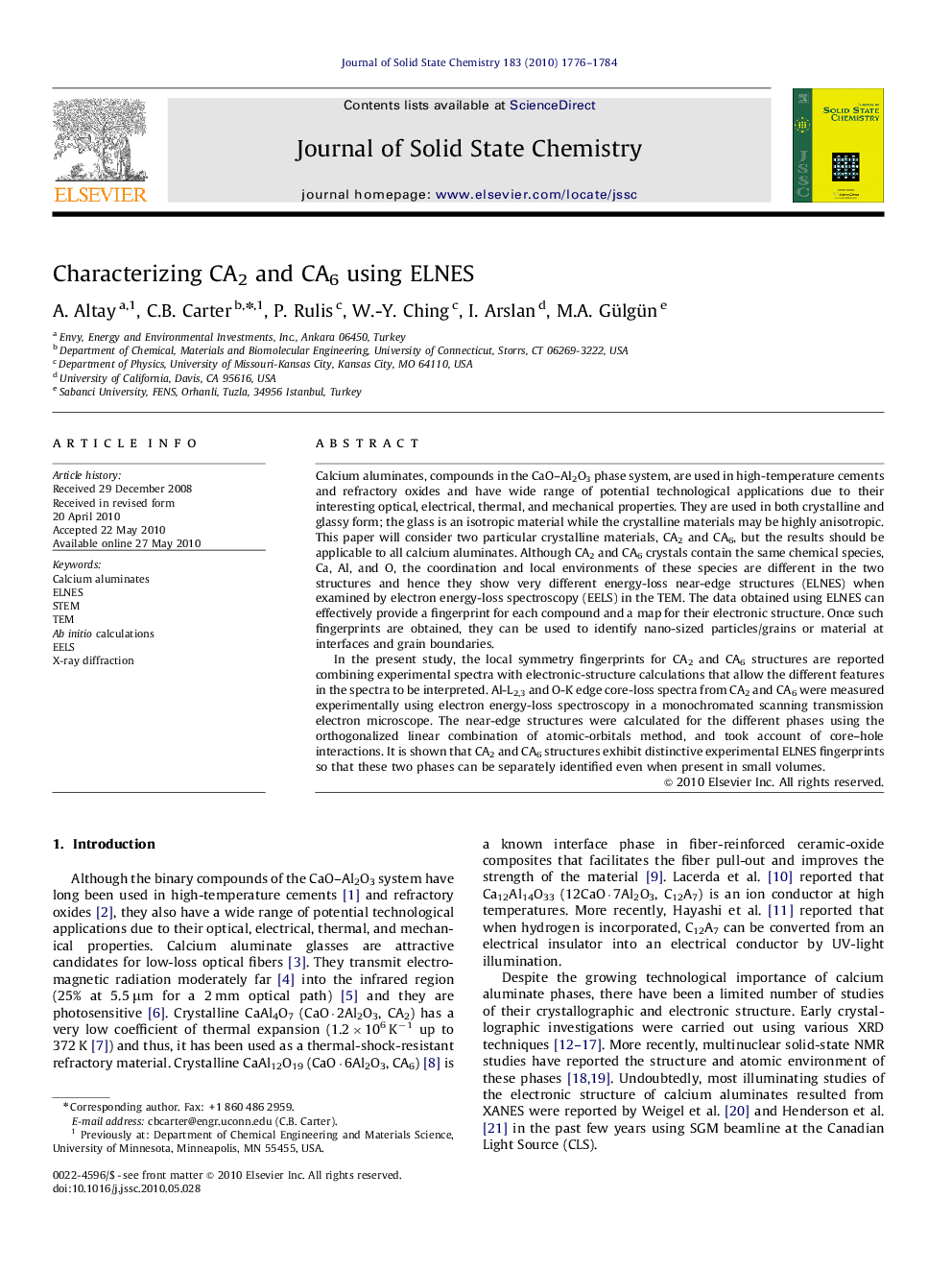| Article ID | Journal | Published Year | Pages | File Type |
|---|---|---|---|---|
| 1333378 | Journal of Solid State Chemistry | 2010 | 9 Pages |
Calcium aluminates, compounds in the CaO–Al2O3 phase system, are used in high-temperature cements and refractory oxides and have wide range of potential technological applications due to their interesting optical, electrical, thermal, and mechanical properties. They are used in both crystalline and glassy form; the glass is an isotropic material while the crystalline materials may be highly anisotropic. This paper will consider two particular crystalline materials, CA2 and CA6, but the results should be applicable to all calcium aluminates. Although CA2 and CA6 crystals contain the same chemical species, Ca, Al, and O, the coordination and local environments of these species are different in the two structures and hence they show very different energy-loss near-edge structures (ELNES) when examined by electron energy-loss spectroscopy (EELS) in the TEM. The data obtained using ELNES can effectively provide a fingerprint for each compound and a map for their electronic structure. Once such fingerprints are obtained, they can be used to identify nano-sized particles/grains or material at interfaces and grain boundaries.In the present study, the local symmetry fingerprints for CA2 and CA6 structures are reported combining experimental spectra with electronic-structure calculations that allow the different features in the spectra to be interpreted. Al-L2,3 and O-K edge core-loss spectra from CA2 and CA6 were measured experimentally using electron energy-loss spectroscopy in a monochromated scanning transmission electron microscope. The near-edge structures were calculated for the different phases using the orthogonalized linear combination of atomic-orbitals method, and took account of core–hole interactions. It is shown that CA2 and CA6 structures exhibit distinctive experimental ELNES fingerprints so that these two phases can be separately identified even when present in small volumes.
Graphical abstractProjection of the CA2 structure viewed in the [010] direction. Green atoms represent the Ca2+ ions and blue atoms represent the Al3+ ions. Two unit cells are outlined..Figure optionsDownload full-size imageDownload as PowerPoint slide
